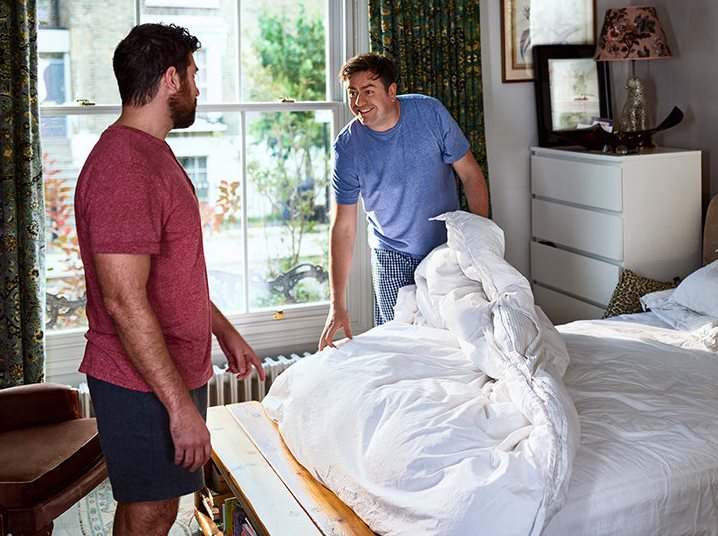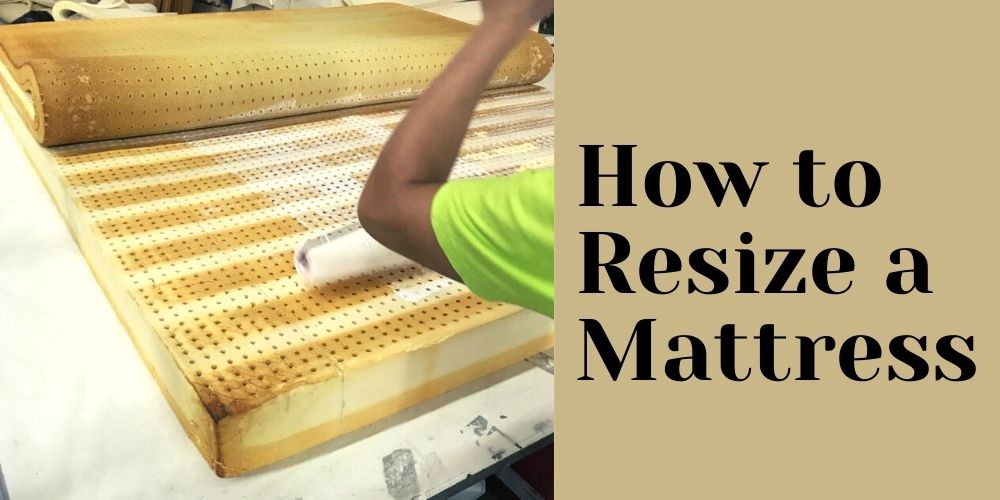The presence of dampness or wetness under your mattress is a severe reason for concern. Because dampness leads to mold growing and spreading within your mattress.
After that, mold releases spores into the surrounding environment, causing serious health problems related to allergy. So, thinking about solving this problem, the first thing I needed to know Why is my mattress wet underneath?

If you see moisture accumulation beneath your mattress, taking steps to remedy the situation may assist to avoid health problems in your house from occurring.
Why is my mattress wet underneath?
One or a combination of the following might be causing the wetness beneath your memory foam mattress:
Putting Mattress Straight on the Ground
Positioning the mattress directly on a hard surface such as a floor traps moisture underneath the mattress.
Not to mention the danger of water absorption by the mattress if it is present close or around it. Think of the mattress as a sponge that is ready to soak up whatever quantity of water it encounters.
This issue is much more severe with all-foam mattresses, such as a memory foam mattress or the gel memory foam variety.
Solid and Impermeable Bed Base
A possible issue that is comparable to a mattress that is flat on the ground.
Structurally, a mattress that is properly supported will last longer. However, a base or foundation that does not enable the mattress to breathe on the bottom surface might be problematic.
You can’t get around this problem by routinely raising the mattress. It is also difficult to accomplish than it may seem.

High Moisture
Humidity simply refers to the quantity of moisture in the air. As much as the bed is a cozy spot to cuddle up, some people spend more time in it performing a variety of other things as well. Interestingly, the air exhaled includes more water vapor than the air that was inhaled.
To put it another way, the greater amount of time spent in the bedroom means that it doesn’t have as much time to “rejuvenate” from the persistent presence of high humidity. In many cases, the issue is exacerbated by a lack of ventilation since the windows are often closed.
Water Leaking Through Air-conditioning Piping System
A typical room temperature control system includes an air conditioner that needs a pipe system to and from it. An air-conditioning pipe system that is buried in the wall provides a greater risk than one that is exposed to the elements.
It is possible for the system to choke, resulting in water being discharged in locations it was not planned to. For example near your mattress.
Gap Between Window Frames
The presence of water in a space isn’t always visible. It’s possible that the problem isn’t with what you’re doing, but with the building itself.
If the water did not originate from within the room, it may have entered the home from the outside.
There may be a gap between the window frames and the wall in which they are installed that hasn’t been properly filled up. Water will always find a way in, even if there is a great distance between you and it. If you discover wetness around the window frame, you’ve likely located the primary reason.
Having a leaking roof is another possibility. Now you know where to look and what to do if you find any wetness on the wall that extends all the way to the top of the wall itself.
As the lowest position in the home or if you have a basement bedroom might be at danger of water seepage.
There was a leak from the adjoining bathroom
The shared wall between the bathroom and your bedroom might enable water to leak into the bedroom. Water may travel from one side of the wall to the other because of two primary factors:
There is a water supply line that passes through the common wall that is broken or damaged. Underneath the tile, an improperly fitted waterproofing system has leaked into the wall.
How to Solve The Issue of Mattress Getting Wet Underneath?
In a similar vein, you could wonder, “How can I keep the wetness beneath my mattress?”

Here are a few possible approaches to dealing with this issue:
Frequently Asked Questions (FAQs)
Do you need airflow under a mattress?
Because you produce moisture while sleeping, you want enough air flow beneath the bed. In contrast to conventional beds, which include a box spring below to aid in the creation of airflow, van conversions often do not have enough room for one.
How to prevent moisture under the mattress?
It will be easier to keep moisture from gathering beneath the mattress by increasing air circulation in the room and running a dehumidifier.
How do I get the airflow under my mattress?
Place your mattress on top of the modulars to complete the look. To ensure proper air circulation beneath the bed, check to see that the mattress does not hang too far down on one side, which would prevent proper air circulation. Unless you can see through the modulars on both sides of the bed, air will continue to flow underneath the bed frame.
Conclusion
It is not necessary to replace a mattress when it gets wet due to the leakage of simple water. Using a fan or the sun to dry it thoroughly may just entail a lengthier period of time waiting for it to dry completely.
Even tiny stains may be removed with an alcohol solution or white vinegar applied directly to the discoloration. Instead of replacing your mattress, it may be simpler and more healthful to replace the dampness that resulted in the stain and odor created by flavored and coloured drinks, or regular bedwetting, in cases where the damage is significant.


